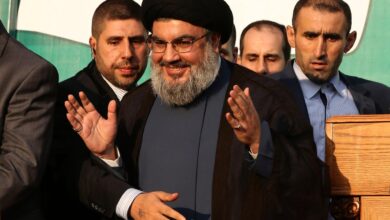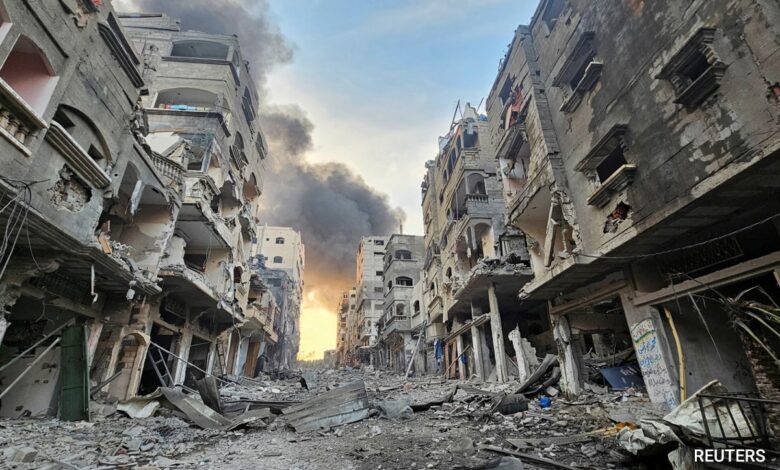
Gaza After the Dust Settles A Look Ahead
Gaza After the Dust Settles: This phrase encapsulates the immense challenge facing Gaza after another devastating conflict. It’s not just about rebuilding homes and infrastructure; it’s about rebuilding lives, economies, and a shattered sense of hope. This post delves into the immediate humanitarian needs, the long road to reconstruction, and the complex political and social factors that will shape Gaza’s future.
We’ll explore the crucial role of international aid, the potential for sustainable development, and the daunting task of fostering lasting peace in this war-torn region.
The scale of destruction is staggering. Beyond the physical damage to homes, hospitals, and schools, there’s the unseen trauma etched onto the hearts of the Gazan people. We’ll examine the psychological impact of years of conflict, the economic devastation that cripples families, and the urgent need for a comprehensive and sustained international response. It’s a complex picture, one painted with shades of despair and resilience in equal measure.
Immediate Humanitarian Needs
The aftermath of conflict in Gaza presents a catastrophic humanitarian crisis. The scale of destruction to infrastructure, coupled with the displacement of a significant portion of the population, necessitates an immediate and substantial international response. Access to essential resources is severely hampered, leading to widespread suffering and a high risk of further loss of life. The challenges are multifaceted and require a coordinated effort from various humanitarian organizations and governments.
The immediate needs are immense and span across multiple sectors. The lack of access to clean water, adequate sanitation, sufficient food supplies, and functioning medical facilities poses a significant threat to public health. The sheer number of injured and displaced individuals requires a rapid and efficient delivery of medical aid, including surgical supplies, medicines, and personnel. The destruction of homes and essential services further compounds the challenges, leaving many without shelter, clean water, and basic necessities.
Food Security
The conflict has severely disrupted the food supply chain in Gaza. Many families have lost their livelihoods and sources of income, leaving them unable to afford basic food items. Existing food reserves have been depleted, and access to markets remains limited due to ongoing security concerns and damaged infrastructure. The required resources include ready-to-eat meals, nutritional supplements for children and vulnerable populations, and long-term food assistance to ensure food security until normal life can resume.
Estimates suggest that hundreds of thousands require immediate food aid. For example, following similar conflicts in other regions, we’ve seen a significant increase in malnutrition rates among children under five, highlighting the urgent need for prompt intervention.
Rebuilding Gaza after the recent conflict will be a monumental task, requiring international cooperation and a focus on long-term solutions. The political landscape, however, remains complex, and understanding the power dynamics is crucial; for instance, check out this insightful newsletter on the subject, checks and balance newsletter trumps mass deportation fantasy , which highlights the limitations of simplistic solutions.
Ultimately, the path to recovery in Gaza depends on addressing the root causes of conflict, not just the immediate aftermath.
Water and Sanitation
The destruction of water infrastructure, including pipelines and sanitation systems, has resulted in a severe shortage of clean drinking water and increased risk of waterborne diseases. Many areas are without access to functional sanitation facilities, creating unsanitary conditions and exacerbating health risks. Resources needed include water purification tablets, emergency water supplies, sanitation kits (toilets, hygiene supplies), and personnel to repair damaged water and sanitation systems.
The scale of the problem is significant, with potentially millions affected by limited access to clean water and sanitation. For instance, the World Health Organization has historically documented outbreaks of cholera and typhoid in similar situations, underscoring the urgency of addressing this issue.
Medical Care
Hospitals and medical facilities have been damaged or destroyed, leaving many injured without access to essential medical care. Medical supplies, including surgical equipment, medicines, and bandages, are critically low. The number of injured individuals needing treatment far exceeds the capacity of the remaining functional facilities. Required resources include medical personnel (doctors, nurses, paramedics), surgical supplies, essential medicines, ambulances, and mobile medical units to provide care in affected areas.
Thinking about Gaza after the dust settles, the sheer scale of rebuilding is daunting. It’s hard to imagine focusing on anything else, yet global politics marches on; I just read about trump appoints a chief of staff , a stark reminder that even amidst humanitarian crises, the wheels of power keep turning. Ultimately, the long-term recovery of Gaza will require sustained international attention and commitment, far beyond the headlines.
Similar crises in other parts of the world have demonstrated the devastating impact of delayed or inadequate medical care, leading to preventable deaths and long-term health complications.
Aid Distribution Plan
| Location | Resource Needed | Quantity | Distribution Method |
|---|---|---|---|
| Northern Gaza Strip | Ready-to-eat meals, water purification tablets | 10,000 meals, 5,000 tablets | Mobile distribution units, partnering with local NGOs |
| Southern Gaza Strip | Medical supplies (bandages, antibiotics), sanitation kits | 5,000 kits, 2,000 medical supply packages | Airlift, coordination with UN agencies |
| Central Gaza Strip | Water tankers, temporary shelters | 20 water tankers, 1,000 tents | Land convoys, collaboration with international aid organizations |
| Gaza City | Fuel, generators, medical personnel | 100,000 liters of fuel, 50 generators, 100 medical professionals | Seaborne transport, direct deployment of international teams |
Reconstruction and Infrastructure: Gaza After The Dust Settles
The devastation wrought upon Gaza’s infrastructure following the recent conflict is immense and will require a sustained, multi-phased approach to recovery. The scale of destruction necessitates a carefully planned and coordinated effort involving international aid, local expertise, and a commitment to building back better, focusing on resilience and sustainability. The immediate needs for shelter and basic services have been addressed, but the long-term reconstruction of essential infrastructure remains a monumental task.The extent of damage to Gaza’s infrastructure is staggering.
Housing has been decimated in many areas, leaving thousands homeless. The power grid, already fragile before the conflict, is severely damaged, resulting in widespread power outages. Water and sanitation systems have been compromised, leading to concerns about waterborne diseases and inadequate hygiene. Damage to roads, bridges, and other transportation networks hinders access to essential services and the delivery of aid.
Hospitals and schools have also suffered significant damage, impacting healthcare access and education.
Assessment and Planning Phase
This initial phase involves a comprehensive assessment of the damage to all infrastructure components. This includes detailed surveys of damaged buildings, power lines, water pipes, roads, and other essential infrastructure. The assessment should identify critical needs and prioritize areas for immediate action. Simultaneously, a detailed reconstruction plan will be developed, outlining specific projects, timelines, and resource requirements.
Rebuilding Gaza after the recent conflict will be a monumental task, requiring international cooperation and significant financial investment. The scale of the challenge is even more daunting when you consider the wider geopolitical context; a recent article highlighted how a flailing economy has left the EU exposed to Trumpian outbursts, a flailing economy has left the EU exposed to Trumpian outbursts , impacting their ability to effectively address global crises like the urgent need for Gaza’s reconstruction.
This instability ultimately hinders the aid efforts crucial for Gaza’s recovery and long-term stability.
This plan should be transparent and accessible to all stakeholders, including local communities. This phase also involves the establishment of a centralized coordination body to oversee the entire reconstruction effort. The body would consist of representatives from international organizations, the Palestinian Authority, and local communities. This body would be responsible for ensuring the efficient allocation of resources and the coordination of various reconstruction projects.
Emergency Repairs and Stabilization Phase
This phase focuses on immediate repairs to critical infrastructure to restore essential services. This includes temporary repairs to damaged water pipes to ensure access to clean water, temporary power restoration using generators and mobile power units, and the repair of damaged roads and bridges to facilitate access to affected areas. Emergency shelters will be provided for those who have lost their homes, and temporary healthcare facilities will be set up to meet immediate medical needs.
The visual representation of this phase would depict a scene of immediate action, showing emergency crews repairing damaged water pipes and power lines, along with the construction of temporary shelters and medical facilities. Think vibrant colors indicating emergency response, a sense of urgency, and the use of temporary materials like tents and mobile generators.
Reconstruction of Housing and Essential Services Phase
This phase involves the rebuilding of damaged housing units and the restoration of essential services, such as water, sanitation, electricity, and transportation. The reconstruction of housing will prioritize vulnerable populations, including women, children, and the elderly. The design of new housing units will incorporate sustainable building materials and energy-efficient technologies to improve resilience to future shocks. The visual representation of this phase shows a shift to more organized construction, with cranes lifting building materials and workers constructing permanent structures.
The colors would be more muted, reflecting the long-term nature of the work, and the image would highlight the use of modern and sustainable building materials. The reconstruction of schools and hospitals will be given high priority, ensuring access to education and healthcare for all.
Infrastructure Development and Resilience Phase
This final phase focuses on upgrading and expanding Gaza’s infrastructure to enhance its resilience to future shocks. This includes investments in renewable energy sources, advanced water management systems, and improved transportation networks. The visual representation of this phase shows a modern and sustainable Gaza, with solar panels on rooftops, efficient water management systems, and well-maintained roads and transportation networks.
The overall image should convey a sense of progress and prosperity. This phase also includes community engagement and capacity building initiatives to ensure the long-term sustainability of the reconstructed infrastructure. This would involve training local workers in modern construction techniques and providing them with the necessary tools and equipment.
Economic Recovery
The devastation wrought by the recent conflict in Gaza extends far beyond the physical destruction. The long-term economic implications are profound and will require a multifaceted, sustained effort to rebuild not just infrastructure, but also the livelihoods of its people. The already fragile economy, hampered by years of blockade and internal strife, faces a steep uphill battle to achieve sustainable growth and alleviate widespread poverty.
Rebuilding Gaza’s economy requires a comprehensive strategy focusing on job creation, investment in key sectors, and support for small and medium-sized enterprises (SMEs).The conflict has decimated existing businesses, disrupted supply chains, and drastically reduced consumer spending. Many Gazans have lost their jobs, their homes, and their savings. This economic shockwave will have ripple effects for years to come, potentially leading to increased unemployment, poverty, and social unrest.
Rebuilding trust in the economy and fostering an environment conducive to investment is crucial to attract both domestic and international capital. This will require transparency, good governance, and a clear, predictable regulatory framework.
Strategies for Supporting Small Businesses and Creating Job Opportunities
Supporting small businesses is paramount to Gaza’s economic recovery. These businesses form the backbone of the Gazan economy, employing a significant portion of the workforce. Strategies should include providing microloans and grants to help businesses rebuild and restart operations. Access to affordable credit, coupled with business training and mentorship programs, can significantly boost their resilience and growth potential.
Furthermore, initiatives focusing on skills development and vocational training are essential to equip the workforce with the skills needed for the emerging job market. Examples include programs focused on technology, construction, and renewable energy, aligning with potential future economic growth sectors. Government procurement policies could prioritize local businesses, further stimulating demand and job creation.
Potential Economic Sectors for Future Investment and Growth
The path to economic recovery in Gaza necessitates strategic investment in sectors with high growth potential and the capacity to create numerous jobs. Careful consideration of the environmental impact and sustainability should also be central to these investment decisions.
- Tourism: Gaza possesses historical sites and coastal areas with tourism potential. Investing in infrastructure, improving security, and promoting Gaza as a tourist destination could generate significant revenue and employment. This would require addressing safety concerns and improving infrastructure to attract international tourists. Similar successful examples can be found in other regions that have transformed their economies through tourism.
- Agriculture and Fisheries: Gaza’s fertile land and coastal waters offer significant opportunities for agricultural and fisheries development. Modernizing farming techniques, improving irrigation systems, and providing access to better quality seeds and fertilizers can increase productivity. Similarly, sustainable fishing practices and investments in processing facilities can boost this sector’s contribution to the economy. Success stories in sustainable agriculture in other conflict-affected regions can provide valuable lessons.
- Renewable Energy: Investing in solar and wind energy can address Gaza’s energy deficit, create jobs in the renewable energy sector, and reduce reliance on imported fossil fuels. This aligns with global sustainability goals and presents a long-term solution to energy insecurity. Examples of successful renewable energy projects in other regions facing similar challenges can guide investment strategies.
- Information Technology (IT): Developing the IT sector can create high-skilled jobs and attract foreign investment. Investing in education and training programs focused on software development, cybersecurity, and other IT skills is crucial. Successful examples of IT hubs in developing countries can be used as models.
- Construction and Infrastructure Development: The reconstruction of damaged infrastructure presents a significant opportunity for job creation in the construction sector. Prioritizing the use of locally sourced materials and employing local workers can maximize the economic benefits of this sector. This will require transparent procurement processes and a focus on building resilient infrastructure.
Social and Psychological Impact
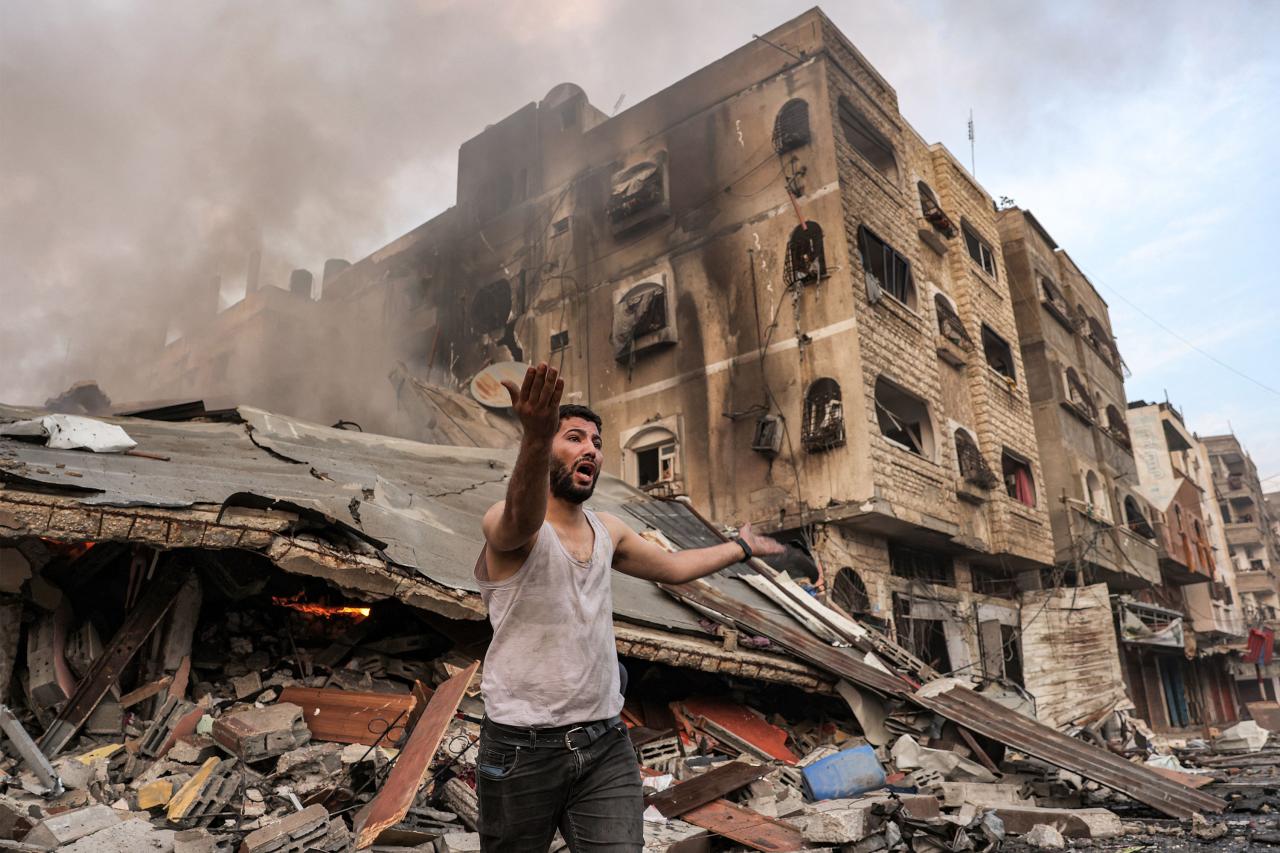
The aftermath of conflict in Gaza leaves an indelible mark, extending far beyond the physical destruction. The social fabric is frayed, and the psychological well-being of the population is severely compromised. Years of conflict, blockade, and displacement have created a complex web of trauma, impacting individuals, families, and the community as a whole. Understanding these profound effects is crucial for effective long-term recovery and rebuilding.The prolonged exposure to violence, loss, and uncertainty in Gaza has resulted in widespread mental health challenges.
These range from acute stress reactions and post-traumatic stress disorder (PTSD) to depression, anxiety, and other mental health conditions. Children, particularly, are vulnerable, often experiencing developmental delays, learning difficulties, and behavioral problems stemming from witnessing or experiencing traumatic events. The constant threat of violence and the lack of basic necessities contribute to a pervasive sense of insecurity and hopelessness, impacting the overall mental health of the population.
Furthermore, the disruption of social structures and support systems exacerbates these issues, leaving many feeling isolated and unsupported.
Prevalence of Mental Health Conditions
Studies conducted in Gaza following periods of conflict consistently reveal high rates of mental health disorders among residents. For example, a 2014 study published in the “Lancet” found that 75% of Gazans reported experiencing at least one mental health symptom following an escalation in conflict. This highlights the widespread nature of the psychological impact and the urgent need for comprehensive mental health services.
The lack of access to adequate healthcare, coupled with the ongoing stress of living under siege, perpetuates this cycle of suffering. These statistics underscore the severity of the situation and the importance of addressing the mental health needs of the population as a critical component of any long-term recovery plan.
Long-Term Effects of Trauma and Displacement
The long-term effects of trauma and displacement on mental health in Gaza are profound and far-reaching. Untreated PTSD, for instance, can lead to chronic health problems, relationship difficulties, and substance abuse. Children exposed to trauma may exhibit difficulties in school, forming attachments, and regulating their emotions, which can have long-lasting consequences on their development and well-being. Generational trauma also plays a significant role, with the experiences of parents and grandparents influencing the mental health of subsequent generations.
The cumulative effect of repeated trauma and displacement creates a cycle of suffering that hinders individual and societal progress. This underscores the need for sustained, long-term mental health support and trauma-informed interventions.
Mental Health Programs and Initiatives
Several organizations are working to address the psychological needs of Gaza’s population. These initiatives often involve providing psychosocial support, trauma-focused therapy, and community-based mental health services. For example, some programs focus on providing individual and group therapy sessions, while others prioritize community-based interventions such as stress management workshops and support groups. Training local healthcare workers in mental health care is also a crucial aspect of these efforts, aiming to build sustainable capacity within Gaza.
However, the scale of the need far outweighs the available resources, highlighting the critical need for increased international support and investment in mental health services in Gaza. The limited access to resources, coupled with the ongoing security situation, creates significant challenges in providing effective and sustainable mental health care.
Political and Security Implications
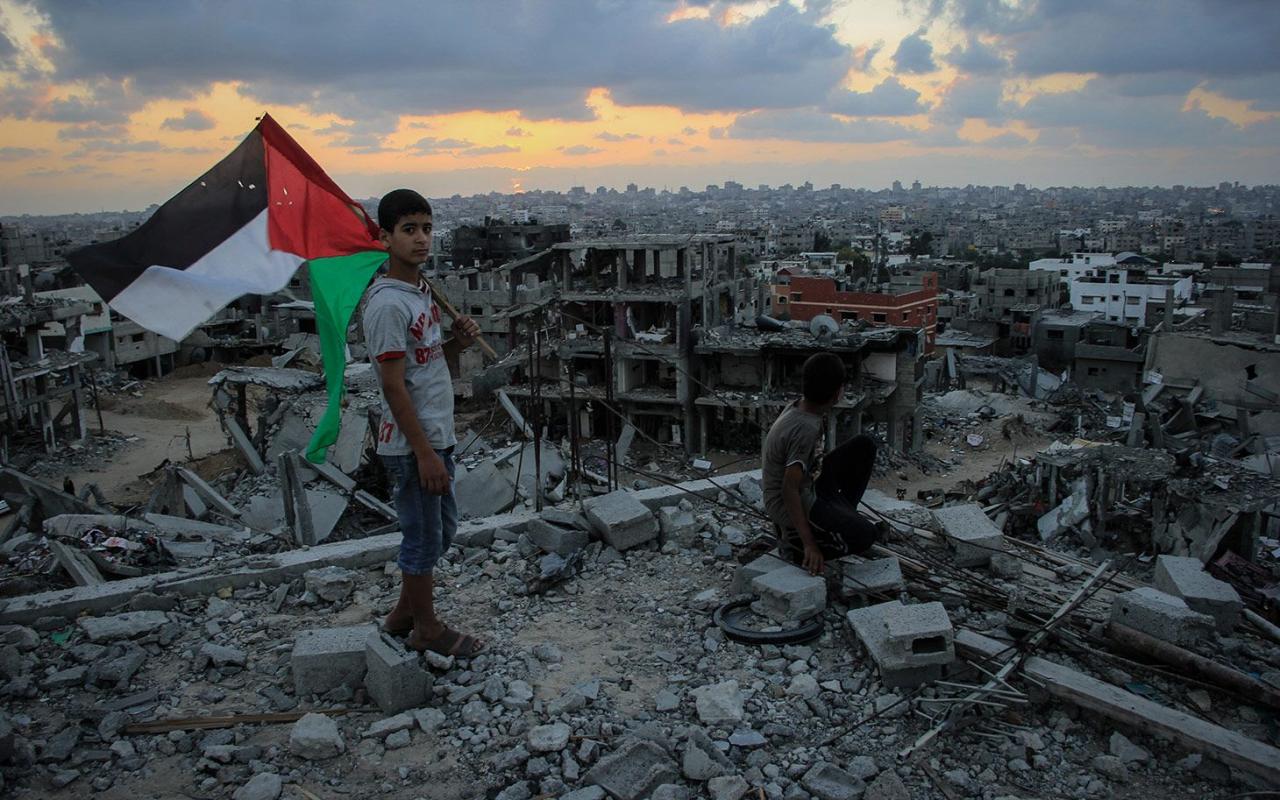
The aftermath of conflict in Gaza invariably reshapes the political landscape, impacting both internal governance and regional dynamics. Understanding these shifts is crucial for predicting future stability and crafting effective peacebuilding strategies. The pre-conflict situation often involved a fragile power-sharing arrangement between Hamas and Fatah, punctuated by internal divisions and external pressures. The post-conflict scenario will likely see a further consolidation of Hamas’s power, depending on the extent of the damage and the international response.
This, in turn, will affect the already strained relationship with the Palestinian Authority and Israel.The conflict’s impact extends beyond Gaza’s borders, influencing regional stability and international relations. Increased tensions between Israel and its neighbors are almost inevitable, particularly if the conflict results in significant civilian casualties or escalates into a wider regional war. International actors, including the UN, the EU, and the US, will face renewed pressure to mediate and provide aid, potentially leading to shifts in diplomatic strategies and alliances.
The level of international involvement will largely depend on the scale of destruction and the perceived legitimacy of the actions taken by all parties involved.
The Altered Political Landscape in Gaza
The political landscape of Gaza after a major conflict is markedly different from the pre-conflict period. Hamas’s authority, while already strong, is likely to be further solidified in the immediate aftermath, given its role in providing essential services and security during and after the fighting. This could lead to a further marginalization of Fatah and other factions, potentially intensifying internal political divisions.
Reconstruction efforts will inevitably be influenced by Hamas’s control, raising questions about transparency and accountability in the distribution of aid and the management of resources. External actors will need to carefully navigate these internal power dynamics to ensure that aid reaches the most vulnerable populations without inadvertently strengthening Hamas’s political position further. The level of international recognition of Hamas and its involvement in the reconstruction process will be a key factor in determining the stability of the region in the long term.
A scenario similar to post-war Lebanon could emerge, where a dominant group consolidates power while facing internal and external pressures.
Regional Stability and International Relations
The impact on regional stability is significant. A major conflict in Gaza invariably triggers increased tensions between Israel and other actors in the region, such as Hamas, the Palestinian Authority, and potentially other regional players. This could lead to a cycle of violence, undermining existing ceasefires and peace agreements. Furthermore, the humanitarian crisis following the conflict can spill over into neighboring countries, placing a strain on their resources and potentially destabilizing already fragile political systems.
International relations will be affected as various states and international organizations take sides, providing aid or imposing sanctions. This could lead to shifts in alliances and further complicate efforts to resolve the underlying conflict. For example, the 2008-2009 Gaza War led to a significant deterioration in relations between Israel and many Arab states, as well as increased international criticism of Israel’s actions.
Pathways Toward Long-Term Peace and Security
Achieving long-term peace and security in the Gaza Strip and the broader region requires a multifaceted approach addressing the root causes of conflict. The following points Artikel potential pathways:
- Comprehensive ceasefire agreement: A durable ceasefire agreement, involving all relevant actors, is crucial to prevent further escalation. This agreement should address not only the immediate cessation of hostilities but also mechanisms for conflict resolution and long-term security guarantees.
- Addressing the humanitarian crisis: Providing substantial and sustained humanitarian aid is paramount. This should include immediate relief efforts, as well as long-term support for rebuilding infrastructure, restoring essential services, and addressing the needs of the affected population.
- Political reconciliation between Hamas and Fatah: Reconciliation between Hamas and Fatah, creating a unified Palestinian government, is essential for internal stability and effective engagement in peace negotiations with Israel.
- Addressing the blockade of Gaza: Easing the blockade on Gaza is crucial for economic recovery and the well-being of the population. This should involve a phased approach, with careful monitoring to prevent the diversion of resources to military purposes.
- International mediation and engagement: Active involvement of international actors, such as the UN, the Quartet (UN, EU, US, Russia), and other regional players, is essential for mediating negotiations, providing support for peacebuilding initiatives, and ensuring accountability.
International Involvement and Aid
The international response to the aftermath of conflict in Gaza has been multifaceted, involving a complex interplay of governmental actors, international organizations, and NGOs. The effectiveness of this response has been a subject of ongoing debate, marked by both successes and significant shortcomings. Understanding the roles played by different actors and analyzing the effectiveness of aid distribution is crucial for future conflict resolution and reconstruction efforts.The scale and complexity of the humanitarian crisis following the conflict necessitated a significant international response.
Governments, primarily those of Western nations and regional allies, provided substantial financial aid, deploying resources for emergency relief, medical assistance, and longer-term reconstruction projects. International organizations like the UN, through agencies such as UNRWA (United Nations Relief and Works Agency for Palestine Refugees in the Near East) and the UNHCR (United Nations High Commissioner for Refugees), played a pivotal role in coordinating aid delivery, providing essential services, and advocating for the needs of the affected population.
Numerous NGOs, both international and local, also contributed significantly, focusing on areas such as food distribution, shelter provision, medical care, and psychosocial support.
Roles of Various International Actors
The international community’s involvement encompassed a wide range of activities. UNRWA, for example, has been instrumental in providing essential services to Palestinian refugees, including food assistance, healthcare, education, and sanitation. Other UN agencies, such as UNICEF and WHO, focused on specific needs, like child protection and healthcare provision respectively. Individual governments, like the United States, European Union member states, and several Arab nations, provided substantial financial aid and logistical support.
NGOs, operating both independently and in collaboration with UN agencies, filled crucial gaps in service provision, often reaching communities inaccessible to larger organizations. Their work encompassed emergency relief, long-term development projects, and advocacy for the rights of affected populations. The coordination between these various actors, however, has not always been seamless, leading to challenges in efficiency and effectiveness.
Effectiveness of International Aid Distribution and Coordination
The distribution and coordination of international aid have faced significant challenges. Access restrictions, bureaucratic hurdles, and security concerns often hampered the timely delivery of assistance to those most in need. The fragmentation of the aid response, with numerous actors operating independently, sometimes resulted in duplication of efforts and a lack of overall coherence. Furthermore, concerns have been raised regarding the transparency and accountability of aid distribution, with accusations of bias and inefficiency.
While significant quantities of aid were provided, ensuring its equitable and effective distribution to the affected population remained a considerable obstacle. The need for improved coordination mechanisms and enhanced transparency in aid management has been consistently highlighted in post-conflict assessments.
Successful International Collaborations in Post-Conflict Reconstruction
Despite the challenges, some examples of successful international collaborations in Gaza’s post-conflict reconstruction are evident. Joint initiatives between UN agencies and NGOs in providing healthcare and education services have demonstrated effectiveness in reaching vulnerable populations. The reconstruction of infrastructure, such as schools and hospitals, often involved partnerships between international organizations, governments, and local communities. These collaborative efforts, while not without their flaws, highlight the potential for effective and impactful post-conflict reconstruction when different actors work together in a coordinated and transparent manner.
The key to success in these collaborations often lies in a clear division of labor, shared goals, and effective communication channels between all involved parties.
Long-Term Development and Sustainability
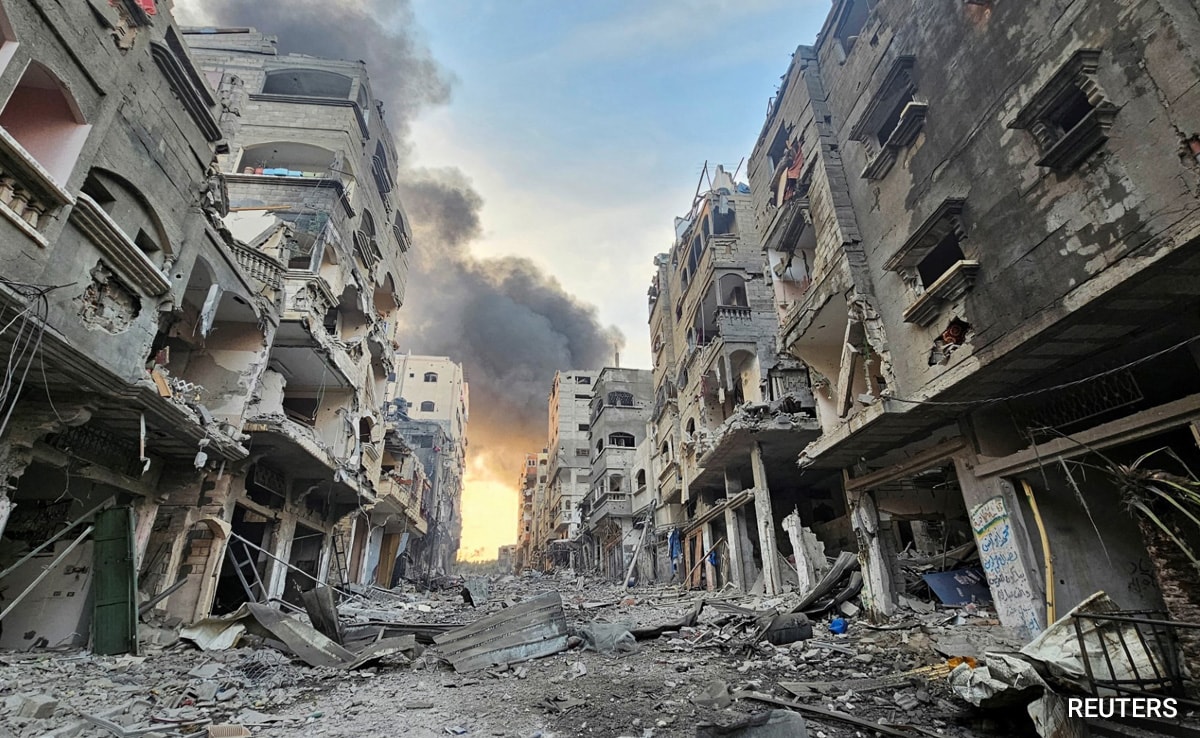
The devastation in Gaza necessitates a long-term vision that transcends immediate relief efforts. Sustainable development, focused on self-reliance and resilience, is paramount to preventing future crises and fostering genuine progress. This requires a multi-faceted approach encompassing economic empowerment, improved infrastructure, strengthened institutions, and a focus on human capital development. The goal is not simply rebuilding what was lost, but creating a more robust and equitable society capable of withstanding future shocks.
Sustainable Development Plan for Gaza, Gaza after the dust settles
A comprehensive plan for sustainable development in Gaza must prioritize self-sufficiency. This means diversifying the economy beyond aid dependency, fostering local entrepreneurship, and investing in renewable energy sources to reduce reliance on external energy supplies. Infrastructure development should focus on resilient designs capable of withstanding natural disasters and conflict. Furthermore, effective governance and transparent institutions are essential for accountability and attracting foreign investment.
This requires capacity building within existing governmental structures and promoting good governance practices. Crucially, the plan must actively involve the Gazan population in its design and implementation, ensuring ownership and buy-in at every stage.
The Role of Education, Healthcare, and Economic Empowerment
Investing in human capital is central to long-term stability. A well-educated populace is better equipped to participate in a modern economy, driving innovation and creating opportunities. Quality education, from primary school through higher education, should be a top priority, focusing on STEM fields and vocational training to meet the demands of a developing economy. Similarly, access to quality healthcare is essential for a productive workforce and a healthy society.
This requires improvements in infrastructure, equipment, and the training of healthcare professionals. Economic empowerment is achieved through job creation, skills development, and support for small and medium-sized enterprises (SMEs). This includes access to microfinance, business training, and market access opportunities. Furthermore, fostering a culture of entrepreneurship and innovation is crucial to generating sustainable economic growth.
Key Indicators for Monitoring Progress
The success of the long-term development plan requires consistent monitoring and evaluation. The following table Artikels key indicators to track progress toward sustainable development goals in Gaza:
| Indicator | Target | Current Status (Illustrative Example) | Action Plan |
|---|---|---|---|
| GDP per capita | Increase by X% in 5 years | Currently Y USD; requires significant economic diversification and investment | Diversify the economy, attract foreign investment, support SMEs, develop export markets. |
| Literacy rate | Achieve Z% literacy rate | Currently at W%; requires improved access to quality education | Invest in schools, teacher training, and educational materials; promote adult literacy programs. |
| Unemployment rate | Reduce unemployment to A% | Currently at B%; requires job creation and skills development | Invest in job creation initiatives, vocational training, and entrepreneurship support programs. |
| Access to clean water | Provide access to clean water for 100% of the population | Currently at C%; requires infrastructure improvements and water management solutions | Invest in water infrastructure, implement water conservation measures, and improve water treatment facilities. |
The path ahead for Gaza is long and arduous. Rebuilding Gaza is not merely a matter of bricks and mortar; it requires a fundamental shift in regional politics, a commitment to sustainable development, and a sustained effort from the international community. The challenges are immense, but the resilience of the Gazan people, their unwavering hope for a better future, serves as a powerful testament to the human spirit.
Their story is one of survival, of loss, and of the enduring hope for peace. Let us not forget them, and let us work towards a future where such devastation is a relic of the past.


